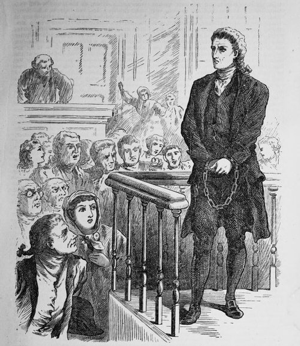The Salem Village Church
For many years, the Salem Village church was not a comprehensive institution. Its first three ministers were not ordained and could not, therefore, administer communion or admit candidates to formal church membership (members were called "saints" or the "elect"). Its congregants remained formally attached to the Salem Town church or other neighboring churches.
Unhappily, Salem Village experienced continuing dissension over its new church. Division and controversy over the ministry were not foreign to New England communities. But most historians think Salem Village had a greater propensity to internal conflict than normal. During the 1670s and 1680s, its first three ministers all stepped down, unable to satisfy either church members, or non-members, or both. The second minister, George Burroughs, who served briefly in the early 1680s, would be charged in 1692 as a leading agent of the Devil.
The various circumstances behind the village's religious instability are not easy to pinpoint. Burroughs evidently developed a reputation, at least among some villagers, for being abusive to his wife. Another minister's qualifications and doctrinal orthodoxy were called into question, and there was grumbling about the increased costs associated with the church. There was also an ongoing dispute over who had the right to vote to hire a minister and to select the Committee of Five — whether only church members or all taxpayers — and whether the ministry house (parsonage) should be given to the minister or remain the possession of the village. As time went on, a key contributor to the village's factionalism was the urgency of some churchgoers to have an ordained minister and a full-fledged church. This issue grew particularly contentious during the ministry of Parris's immediate predecessor, Deodat Lawson, who began his service in 1684.
Some Salem Villagers favored ordaining Lawson as a desirable next step towards greater autonomy and independence from Salem Town. But support or opposition to ordaining Lawson did not necessarily coincide with the issue of village independence. More than village autonomy was at stake in selecting any ordained minister, who not only headed the church but occupied an influential position in the community. Questions of personality, doctrine, and compensation all likely figured in the dispute over Lawson's ordination. In 1687, frustrated by the village's squabbling, Lawson stepped down. In 1689 after a period of negotiation, the village hired the Reverend Samuel Parris and on November 19, 1689, he became Salem Village's first ordained minister. Although still a part of Salem Town, Salem Village now had a true church.
To learn more about Parris's life and his leadership of the Salem Village church, click Next.
